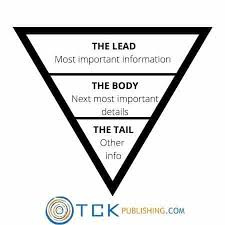By Rob Green, CEO, The GRM Group.
Having worked in the legal talent space for over two decades, on 5 continents (lived on 4), in 55 cities, with law firms of all shapes and sizes, I have seen every organisational structure and pay scheme imaginable.
This article is focussed on the potential future organisational structure of law firms, exploring the concept of a downward pyramid with more senior rainmakers at the top and fewer junior lawyers and support staff due, largely, to technological advancements:
The Evolving Landscape of Law Firm Structures: A Downward Pyramid Emerges
The legal industry is in the midst of a significant transformation, driven by technological advancements, changing client expectations, and evolving market dynamics.
As we look to the future, the traditional pyramid structure of law firms - with a broad base of junior associates and a narrow top of partners - is likely to invert.
This new "downward pyramid" model will feature a larger contingent of experienced rainmakers and fewer junior lawyers and support staff, as technology increasingly assumes many of their traditional roles.
This article explores the factors driving this shift, its potential impacts, and the challenges and opportunities it presents for the legal profession.
The Traditional Law Firm Model
Historically, law firms have operated on a leveraged model, often visualised as a pyramid.
At the base were numerous junior associates, paralegals, and support staff.
As one moved up the pyramid, the numbers decreased, with fewer mid-level associates, even fewer senior associates, and a small number of partners at the apex.
This structure allowed firms to bill substantial hours to clients while maintaining high profit margins, as work was pushed down to less expensive junior staff.
However, this model has faced increasing pressure in recent years. Clients have become more cost-conscious, often refusing to pay for the work of junior associates they view as "learning on the job."
Technological advancements have automated many tasks traditionally performed by junior lawyers and support staff.
Meanwhile, the legal market has become more competitive, with alternative legal service providers and in-house legal departments challenging the traditional law firm monopoly on legal services.
The Emergence of the Downward Pyramid.
As these pressures continue to mount, we are likely to see a fundamental restructuring of law firms into a "downward pyramid" model.
This new structure will be characterised by:
1. A broader top tier of rainmakers and experienced practitioners
2. A smaller middle tier of mid-level associates and specialised professionals
3. A narrow base of junior lawyers and support staff
4. Extensive integration of technology at all levels
Let us explore each of these elements in detail:
1. The Expanded Top Tier
In the future law firm, the top tier will likely expand to include a larger number of senior lawyers who excel at bringing in business, managing client relationships, and handling complex legal matters.
These "rainmakers" will be highly experienced practitioners with deep industry knowledge, strong networks, and the ability to provide high-level strategic advice to clients.
This tier may include:
- Traditional equity partners
- Non-equity partners with significant books of business
- Senior counsel with specific expertise or industry focus
- Client relationship managers who may not practice law but excel at business development
The expansion of this tier reflects the increasing importance of specialisation, industry knowledge, and business acumen in the legal profession.
As routine legal work becomes automated or commoditised, the value of a law firm will increasingly lie in its ability to provide sophisticated, strategic advice and manage complex legal challenges.
2. The Specialised Middle Tier
Below the expanded top tier, we are likely to see a leaner but highly specialised middle tier. This group will consist of:
- Mid-level associates with developing expertise in specific practice areas
- Legal project managers who oversee the execution of complex matters
- Knowledge management specialists who leverage the firm's collective expertise
- Legal technologists who develop and implement tech solutions
- Data analysts who provide insights to support legal strategies
This tier will be smaller than in traditional firms, as many of the routine tasks previously performed by mid-level associates will be automated or outsourced.
However, the roles that remain will be highly skilled and integral to the firm's operations.
3. The Narrow Base
Perhaps the most dramatic change in the future law firm structure will be the significant reduction of the base tier.
This contraction will be driven primarily by technological advancements that can perform many tasks traditionally assigned to junior lawyers and support staff.
The narrow base may include:
- A small number of junior associates, primarily hired for their potential to develop into future rainmakers or specialists
- Paralegals with advanced technical skills
- A lean administrative support team
This tier will be focused on tasks that require human judgment, creativity, or interpersonal skills that cannot be easily replicated by technology.
Junior lawyers in this tier will likely have more client contact and substantive work earlier in their careers, as routine tasks will be handled by technology.
4. Technological Integration
Permeating all levels of the future law firm will be an extensive integration of technology. This will include:
- Artificial Intelligence (AI) and machine learning systems for document review, due diligence, and legal research
- Advanced analytics tools for predicting case outcomes and developing legal strategies
- Automated document assembly and contract management systems
- Blockchain and smart contract technologies for transaction management
- Virtual and augmented reality tools for remote collaboration and courtroom preparation
These technological solutions will not only replace many tasks traditionally performed by junior lawyers and support staff but will also augment the capabilities of senior lawyers, allowing them to provide more value to clients.
Drivers of the Downward Pyramid Structure
Several factors are driving this shift towards a downward pyramid structure:
1. Client Demands: Clients are increasingly sophisticated and cost-conscious, demanding more value for their legal spend. They are less willing to pay for the training of junior associates and expect their legal advisors to have deep industry knowledge and business acumen.
2. Technological Advancements: AI, machine learning, and other technologies are rapidly advancing, capable of performing many tasks traditionally done by junior lawyers and support staff more quickly, accurately, and cost-effectively.
3. Competition from Alternative Providers: Law firms face increasing competition from alternative legal service providers, accounting firms, and in-house legal departments.
To remain competitive, they need to focus on high-value services that cannot be easily replicated or commoditised.
4. Changing Career Expectations: Many young lawyers are seeking more diverse career paths and work-life balance, making the traditional "up or out" partnership track less appealing.
5. Economic Pressures: Law firms are under pressure to maintain profitability in a more competitive market, driving them to seek more efficient structures and leverage technology.
Implications of the Downward Pyramid
The shift to a downward pyramid structure will have significant implications for law firms, lawyers, and the legal profession as a whole:
1. Changing Career Paths: The traditional career progression from junior associate to partner will become less common. Lawyers will need to specialize earlier and develop business development skills to succeed in the top tier.
2. Emphasis on Soft Skills: With routine tasks automated, soft skills such as communication, emotional intelligence, and creativity will become more important for lawyers at all levels.
3. Continuous Learning: Lawyers will need to continuously update their skills, particularly in technology and business, to remain relevant in a rapidly evolving industry.
4. Changing Education and Training: Law schools and professional development programs will need to adapt their curricula to prepare lawyers for this new reality, emphasising technology skills, business acumen, and industry knowledge alongside traditional legal education.
5. New Roles and Specialisations: The future law firm will likely create new roles that don't exist today, such as legal technologists, data scientists, and AI ethicists specialising in legal applications.
6. Flatter Hierarchies: With fewer layers between junior and senior lawyers, law firms may adopt flatter, more collaborative organisational structures.
7. Diversification of Service Offerings: To leverage their expanded top tier of talent, law firms may diversify into adjacent professional services such as consulting, adding further value to clients.
Challenges and Opportunities
The transition to a downward pyramid structure presents both challenges and opportunities for law firms:
Challenges:
1. Managing the transition: Firms will need to carefully manage the shift to avoid disrupting client service and maintain morale during organisational changes.
2. Investment in technology: Significant investment in technology will be required, which may be challenging for smaller or less profitable firms.
3. Cultural change: The new structure will require a shift in firm culture, moving away from the traditional hierarchical model to a more collaborative, technology-embracing environment.
4. Talent acquisition and retention: Firms will need to compete for top talent in both legal and technological fields, potentially against tech companies and other industries.
5. Ethical considerations: The increased use of AI and automation in legal work raises ethical questions that firms will need to navigate carefully.
Opportunities:
1. Improved efficiency and profitability: By leveraging technology and focusing on high-value work, firms can potentially increase their efficiency and profitability.
2. Enhanced client service: The new structure allows firms to provide more specialised, industry-focused advice to clients.
3. Innovation: The integration of technology and new roles opens up opportunities for innovative legal service delivery models.
4. Attracting diverse talent: A more dynamic, technology-driven environment may attract a wider range of talent to the legal profession.
5. Global reach: Technology enables smaller firms to compete globally, potentially levelling the playing field with larger international firms.
Conclusion
There are many plus points on this, not least of all, revenues and service.
If you can have the top of your pyramid, the very best lawyers in the market, supported by world-class technology that assists with speed and accuracy, focussing on deliver of service and client relationships - these combined services are legal services that clients will pay for.
The future law firm structure, characterised by a downward pyramid with an expanded top tier of rainmakers and a technology-enabled base, represents a significant departure from the traditional model.
This shift is driven by changing client demands, technological advancements, and competitive pressures in the legal market.
While this transition presents challenges, it also offers opportunities for law firms to become more efficient, innovative, and client-focused. Success in this new landscape will require firms to embrace change, invest in technology, and foster a culture of continuous learning and adaptation.
As the legal profession evolves, lawyers at all levels will need to develop new skills and adapt to new roles.
The most successful firms will be those that can effectively balance the human expertise of their top-tier rainmakers with the efficiency and insights provided by technology.
Ultimately, the downward pyramid structure may lead to a more dynamic, diverse, and resilient legal industry, better equipped to meet the complex challenges of an increasingly digital and globalised world.
As this transformation unfolds, it will be crucial for law firms, legal educators, and individual lawyers to proactively adapt to and shape this new reality.
BONUS SECTION
The Dark Side of the Downward Pyramid: Implications for Aspiring Lawyers
While the downward pyramid structure may offer benefits for established law firms and experienced practitioners, it presents a bleak outlook for law students and recent graduates entering the legal profession.
This shift could lead to fewer opportunities, more intense competition, and a fundamentally altered career trajectory for aspiring lawyers.
Reduction in Entry-Level Positions
The most immediate and severe impact of the downward pyramid structure is the dramatic reduction in entry-level positions. As technology increasingly handles tasks traditionally assigned to junior associates, firms will hire fewer new graduates.
This shrinking job market will lead to:
Increased competition for fewer positions, potentially leaving many law graduates unemployed or underemployed.
Higher barriers to entry, with firms becoming more selective and possibly favouring graduates from top-tier law schools or those with specialised technical skills.
A potential oversupply of law graduates relative to available positions, potentially devaluing law degrees.
Fewer Training Opportunities
The traditional model of law firms provided a structured environment for new lawyers to learn and develop their skills. The downward pyramid structure disrupts this:
Fewer training contracts and articling positions will be available, limiting opportunities for hands-on learning and mentorship.
With routine tasks automated, new lawyers may struggle to gain foundational experience in legal research, document drafting, and case analysis.
The pressure to specialise early may leave new lawyers with a narrower skill set, potentially limiting their career flexibility.
Altered Career Progression
The new structure fundamentally changes the career path for lawyers:
The traditional progression from junior associate to partner becomes less attainable, with fewer mid-level positions available.
New lawyers may need to pivot to non-traditional legal roles or adjacent fields to build their careers.
The emphasis on business development skills from an early stage may disadvantage those who excel in legal analysis but struggle with networking and client relations.
Financial Implications
The changing structure could have significant financial impacts on new lawyers:
Increased competition for fewer positions may suppress starting salaries.
Higher student debt coupled with fewer job opportunities could create financial strain for many law graduates.
The need for additional technical training or specialised skills may increase the overall cost of entering the profession.
Psychological Impact
The changing landscape could also take a psychological toll on aspiring lawyers:
Increased stress and anxiety due to heightened competition and job insecurity.
Potential disillusionment with the legal profession as traditional career paths become less accessible.
Imposter syndrome may be exacerbated as new lawyers are expected to quickly develop specialised expertise.
Widening Gap in the Profession
The downward pyramid structure could exacerbate existing inequalities in the legal profession:
Graduates from less prestigious schools or disadvantaged backgrounds may find it even harder to break into the profession.
The emphasis on technology skills could disadvantage students who lack access to advanced technological education.
The need for extensive networking to secure top-tier positions may favor those with existing connections in the legal industry.
In conclusion, while the downward pyramid structure may offer efficiencies for law firms, it presents significant challenges for the next generation of lawyers.
This shift could fundamentally alter the nature of legal education and early career development, potentially discouraging talented individuals from entering the profession.
To mitigate these negative impacts, the legal industry, educational institutions, and regulatory bodies will need to collaborate to create new pathways for entry and development in the evolving legal landscape.
Contact Rob Green at rob@thegrmgroup.com







